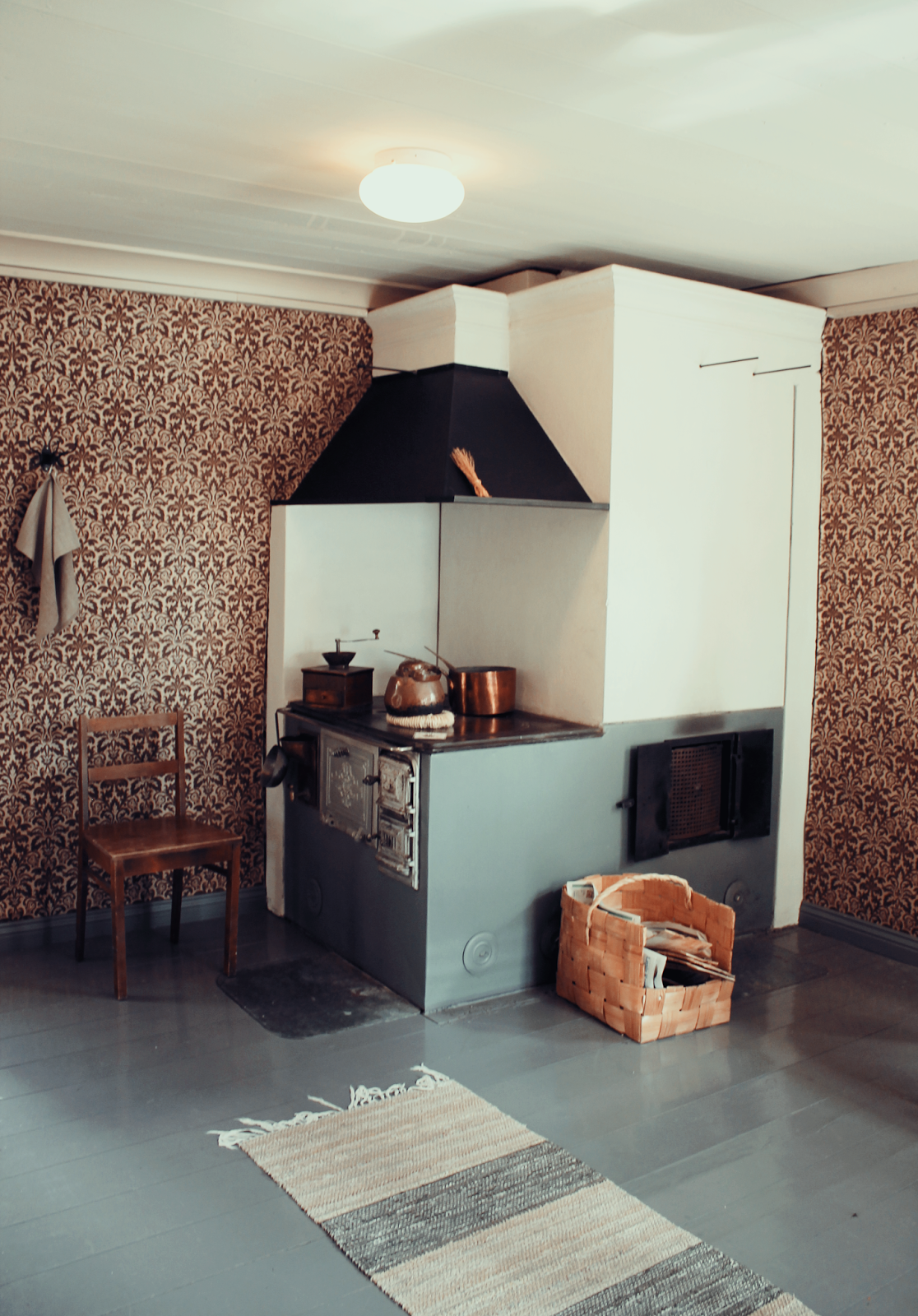I don't know if you still remember but earlier I mentioned an outfit that I couldn't finish on time for the Isokyrö event in August. Well, now it's done, but I only finished it a couple of days ago - so it was more than three months late for the original deadline. The dress would propably still be unfinished by now if I hadn't set a new deadline for it for this year's Christmas ball. Originally I had planned to wear the same dress as last year and make the naval riding habit for a parade preceding the ball but obviously it didn't happen as I'm behind on pretty much everything regarding to sewing (and blogging, too...). Alright, on to the new dress!
I've always loved the white floral print gowns from the 1770s/1780s but they are so very common so wanted something a bit different for myself. After discovering some floral gowns in darker fabrics through museums collections I knew I had to have one like them some day. It took a couple of years but then earlier this year I managed to find a Moda print fabric through Herzwerk-Freiburg that was even more lovely than I had hoped for. The fabric was nearly out of print everywhere so I ended up ordering from three different sources to have enough of it.
For the bodice and sleeves I used a robe à l'Anglaise pattern from The Cut of Women's Clothes by Norah Waugh (see diagram XXII). Working the same way as I always do, I enlarged the scale pattern on the computer and printed it out. However, this pattern turned not to work easily for me and the fact that I had to make quite a few mock-ups with so many alterations delayed the completion of this gown. Also, it didn't help that the fabric stretched a bit more than I had imagined and the stretch of the mock-up fabric was also different... I swear I've never had so much trouble fitting sleeves as with this dress (I guess I only now truly understand the meaning of sleevils ;) ). Not having made sleeves like this earlier I wasn't even sure how they were supposed fit/look but I think they turned out to be alright in the end.
To upgrade the look of a brown day gown into a dress suitable for a ball I added some red accessories, using the same ear rings as last year and the belt that I have worn with pretty much every fitted back gown that I have.
I also intended to make a matching petticoat from the same fabric for this dress but decided to use a sheer white petticoat this time to further enhance the evening gown look and leave the self fabric petticoat for day wear occasions. I'm probably going to wear this dress at the 18th century fair of Isokyrö next year so the brown color of the matching petticoat should be much better for outdoors than the delicate white. The skirt of the dress will also be draped up to avoid the slight train from dragging in ground.
The dress has a tight fitting quarter back but the floral pattern of the fabric conceals the seamlines so you can't see much of them here. I'm actually really happy with the fit of the back since the back of this gown fits more smoothly than the back of my earlier quarter back gown that had wrinkles all over it. There's also a slight train but I made a cutting mistake and it ended up being shorter than I had intented. Looking at the photos, I notice that the train isn't even either - it is longer at the sides of the center back than in the very center. But right now I don't care. Especially because I want to make a divided bum pad like Aubry of A Fractured Fairytale did or at least a bum pad with a dip at the center back, which should fix that problem.
My hairdo was created by Mia, a new friend who traveled with me to the ball for her first time. I feel so lucky that I now have a friend who understands sewing and lives permanently in my hometown! Meeting her has been one of the best things in the past few months and the fact that I met her through my blog helped me to get over my blogging anxieties that have partly kept me away from posting for a while. It reminded me again that there are quite a few lovely people that I might have never met if I didn't have this blog...
Here's Augustin Ehrensvärd himself up in the middle with Noora and I posing next to him.
And last but certainly not least, Mia wearing Noora's floral robe à l'Anglaise.






























































